Community involvement is a foundational cornerstone of every successful small school. In fact, schooling was synonymous with a community’s culture; up until only about 150 years ago, when centralized education ushered in large institutions and standardized curricula. Of course, small schools did not go anywhere. However, from that point on, “small” became synonymous with private and, let’s face it, mostly elite educational environments.
Recently, a renaissance in schooling has emerged. It allows more and more students than ever before to experience the many benefits of small learning communities. For the past 25 years, the Community Works Institute (CWI) has stood at the forefront of this renaissance by helping bridge the gap between community and education; as well as educators, administrators and community leaders from all ends of the educational spectrum.
CWI’s Place-Based Learning Institutes
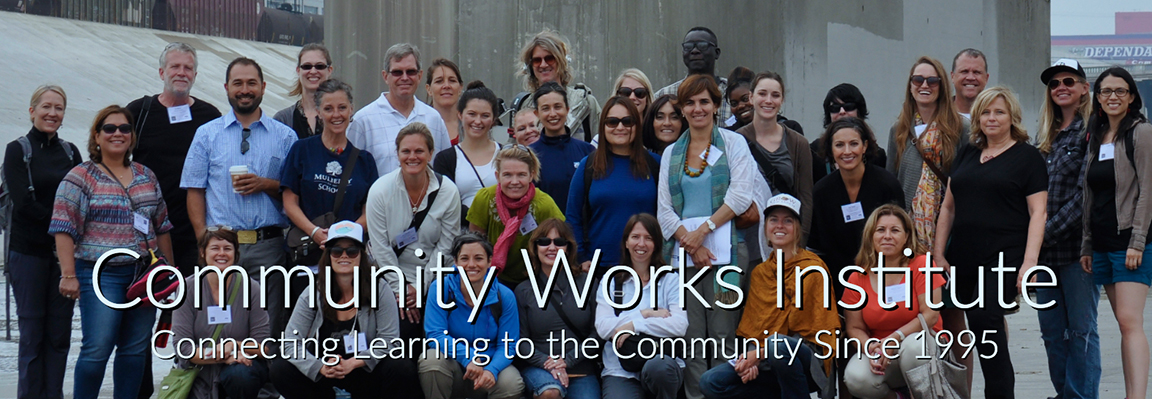
CWI specializes in Place Based Service-Learning and Sustainability They help educators design and evolve projects and programs that provide students with academically based experiential opportunities to engage in critical thinking, problem solving, and ultimately local community action.
CWI offers a core set of Institutes each year, along with on-site work at K-16 schools across the U.S and internationally. They also publish Community Works Journal digital magazine in support of these larger goals, and as a way to connect educators and innovative thinking globally.
We are proud to officially partner with the Community Works Institute and its founder, world-renowned educator Joe Brooks. Among other benefits, this partnership offers all Small School Coalition members generous discounts on all CWI placed-based learning institutes.
To celebrate our partnership, Joe has been kind enough to talk with us and share his thoughts on CWI and the small school movement past, present and future! This is part of a larger interview we recently conducted, the remainder of which you can access by visiting the Community Works Institute website.
Thanks for taking the time to speak with us today Joe! Let’s start off by talking about the Community Works Institute in the general context of education. Specifically, how does CWI’s work currently impact the educational landscape?
As far as impacting the “educational landscape,” that’s a very large landscape out there as we know and I think I may have just illustrated. While I personally have a deep belief in the value and power of small school settings, I also realize fully that the large school mentality and push is not going away anytime soon. Rather, in many places it is intensifying. So our strategy is to work with all sizes, configurations, and types of schools. That approach is grounded in a desire to bring together and impact all like minded educators as innovators and agents of change in their own settings. A goal in that is to create a sense of both solidarity and ripple effects beyond a given Institute grouping or school. For me, all roads lead to Dewey’s notions of experience or as we refer to it, “using the community as the classroom.” This is essentially what we promote with CWI. Over the past three decades, we have carefully and steadily built a network of what I think of as “like minded” educators across the U.S and well beyond.
I often hear from so many of our participants and alums how the latest wave of “change” at their school has negatively impacted or distracted focus on what they value most, connecting learning to the community and to the heart. I’m not going to cite any specific initiatives but the fact is some of these new initiatives have great potential themselves but schools seem to struggle mightily to integrate the latest thing with what they already have defined as their core. And as we all know teachers and administrators are deeply overburdened and maintaining sharp focus can be very hard.
Real change happens teacher by teacher and school by school. I’ve always liked to think of CWI as a “beacon” in that process somehow. My favorite moments are seeing our impact in most profound ways, entire shifts in school thinking and culture after an Institute or training. And sometimes, often, it is about one single teacher or team of teachers.
We are speaking of the educational landscape as generalized vastness. This can make the idea of promoting ideas and missions intimidating and difficult. What is the largest challenge CWI faces in getting its message out to the educational community-at-large?
I think it comes down to belonging and mattering in one’s own community, especially in this complicated world we live in. So my own work with my 7/8 students in rural Vermont began exactly, right there. I quickly realized that there is quite literally no better way to develop Social Emotional Learning skills and outcomes than through real and deep community based learning if you will. I’d note that ’twas just a blink of an eye ago that 21st Century learning was the hot topic and catchphrase, which actually immediately struck me as shortsighted and faddish as a term. So then the question becomes how does one align and lean in to that sort of thing in a meaningful way. For all the innate good in such things there is also something about what I think of as “shiny object syndrome” in all this for schools. Concepts and thinking that are important to their core can also be the ones that are somehow often just repackaged and sold in new form by whoever drives such things.
So we’ve been taking our work in this area of SEL deeper now, what we much earlier called social and personal development, including through some very exciting and quite profound work that I’ve refocused on over the past decade around using ethnography as a teaching tool. I worked many years ago with the late great folklorist Greg Sharrow in Vermont on this. I’m doing that now by quite literally, taking teachers into the streets for practicums. The results and impact on both personal and professional levels have been quite stunning. Put simply, this ethnographic focused work I’m doing now involves learning to understand who we are individually and collective as a community, whether in a classroom or as we do and promote in our work in the larger community that surrounds us.
I recently had an incredibly enthusiastic Institute alum of ours, who was capable of connecting a multitude of “dots” during our work together with Place Based Service-Learning and Sustainability. She returned to her school on fire to get others on board to think and plan together and include Social and Emotional learning in their work. She teaches in a smaller independent international school. You would think…. But, she ran into immediate obstruction for her ideas because the school had apparently just grabbed hold of “21st Century Learning” and she was told that this would be the sole focus as they received trainings and focused only on that in the coming year.
The outcomes of Place Based Service-Learning along with SEL and 21st Century Learning are extremely similar and closely related, and certainly not rocket science for the teachers we work with. Kind of makes you crazy to see schools behave as our colleague alum’s did. I’ve seen the same thing go on with newer initiatives around Project Based Learning (PBL) at schools in the past decade or so. So we realize that we need to anticipate these shifts and progressions and prepare our Institute participants to deal with exactly these sort of situations of new initiatives arriving.
There are a whole lot of conceptual and strategy “silos” and also “providers” of the same out there, selling what they selling, and also state DOEs with their initiatives. I think the thing that makes CWI’s work unique is that we bring together a core set of concepts and pedagogy, Place Based, Sustainability, Service, and Critical inquiry. Also, in terms of educational landscape, we certainly can’t avoid the obsession over the past two decades with “accountability,” and over testing that has gone on and still does. This has pushed many schools (and teachers) away from what they believe in as educators.
In many of the more elite schools I work with it can be a similar story in different guise. In many of those schools the push for high end college admissions often drives all. The ideal of students pursuing personal passion in their learning is certainly very present but can be easily lost in actual practice. These are the realities that we swim in. Teachers I think are caught in the middle, between what they know and care most about, instinctively and from experience, and what they’re being driven to do. They are the ones we must give the most support to, helping them find ways to bring their colleagues along.
All of our conversations keep circling around and back to “community” in one way or the other! So, let’s talk about small, community-based schools for a moment. What role do you feel these schools can or should play in relation to the current mainstream model of “supersized” educational institutions?
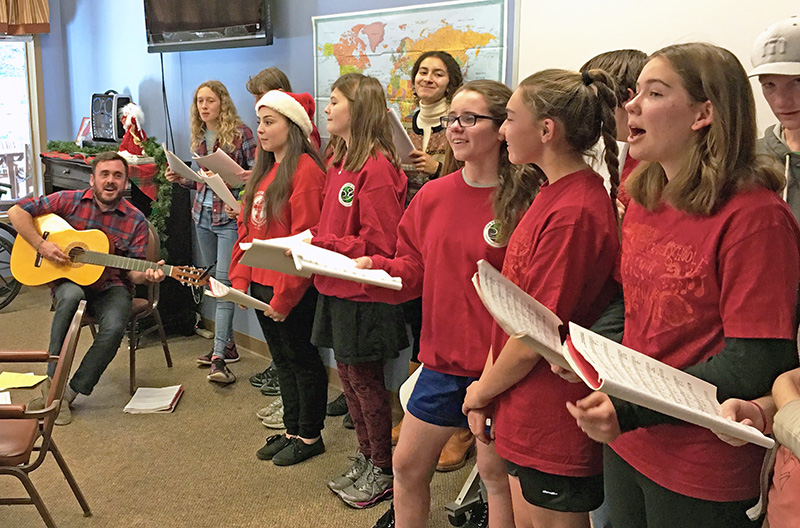
But with a population of three thousand students, who are we kidding? That is in and of itself patently absurd if one really cares about anything resembling personalized learning, hands on learning, and meaningful community connections. And to be clear, they do a great job with what they are managing. But at the end of the day, for many or most of these super large schools it is really about management and they do that extremely well, as they must.
Small schools clearly have the potential to not only create a deeper sense of community, they are also often at the heart or center of the local community. compared to today’s comprehensive or consolidated regional schools, often physically separated by need for larger space. So I continue to see smaller schools as the leaders for change, not all but the ones that have their focus on community.
That is a very fair, balanced and accurate assessment. How does CWI represent small learning communities at this time?
And, candidly, this is a huge missing aspect to modern education, the opportunity for teachers to actually sit and “talk shop” around a specific focus or topic like Place Based Service-Learning that they share mutual passion around.
Over the years we’ve seen more complex approaches evolve. I remember conversations many years ago with our late colleague Faith Dunne in Vermont, who evolved the original concept of Critical Friends Groups before it morphed into something larger and more complex. We shared a belief that teachers simply needed a facilitated process and opportunity to support each other and gain from the synergy of that process.
When you watch what happens in these small learning communities of teachers, you gain a crystal clear sense of shared purpose happening around common belief and practice for what as one colleague termed “talking about what really matters” vs. all the other things that teachers are expected to focus on. I know the feeling of risk taking side by side with students personally and there is no replacement for that. “We don’t know how to do this so let’s figure it out.”
I know of some larger high schools certainly who do a great job breaking things down into smaller learning communities. But I would say there needs to be an understanding by everyone in a school of exactly what is possible when one does a great job of this. Again, small for the sake of small does not get us there. The design process in small must include collaboration, risk taking, problem solving and ultimately a sense of shared purpose, regardless of the task.
This is great information! Let’s build on it by getting more organizationally-minded. Why is the Small Schools Coalition (SSC), and organizations like it that promote small independent learning communities, important?
Some of those schools thrived precisely because they had a support system, one of the best examples being Vermont’s Rural Partnership network. In other cases it was more informal. School size has grown steadily larger for well over 100 years, but not because of any findings or research on learning. Its generally an economic calculation, along with I think of as the corporatization of schools in general.
The prevalence of larger schools can make small school educators appear marginal in terms of producing top educational outcomes. And yet, small schools are generally anything but less by virtue of their size. Research shows they can provide a lot more than “bigger” schools in key areas such as student engagement, teacher staying power, graduation rates and even standardized test outcomes.
So as someone who has worked with and supported the efforts of Small Schools Coalition over quite a few years now it’s an organization and effort that truly needs to exist, and in fact I would like to see its capacity greatly expand in response to a clear need out there. I’m often approached by folks from small schools, or those in the community that see a real threat from consolidation to their local small school and are trying to preempt that. They sometimes essentially need a “rescue brigade”, a consultant or team able to come in and assist them in their fight against what can only be called a much bigger dog, the supervisory union, the state or what have you.
It’s never ever a level playing field. And as I clearly remember in our case, it’s often not a situation where an accurate portrayal of information, options, and possibility is being given by the larger district or state who are intent on achieving what they say as a preordained outcome. That was done multiple times to us at my school in Vermont. We were lucky, we had a preexisting solid community partnership and set of clearly understood programs built by that point. And I would say the outside efforts to consolidate actually spurred us to next levels we needed to go in even deeper building understanding local support. I can recall clearly having a palpable sense of survival.
As we and local townsfolk were plied with images of increased resources and facilities for our students we were actually able to turn that logic on its head. We did of course have real and existing programs to point to which gave us a huge advantage. But many or even most schools are ill prepared to mount such an effort, especially if they have not yet built deeper well articulated community based curriculum and programs. And that’s where organizations like Small Schools Coalition and CWI come in as invaluable assets. I look forward to continuing to work closely with SSC to support these commonly shared goals.
Speaking of common goals… you and our founder, Dr. Stuart Grauer of the Grauer School in Encinitas, go back in time a bit. This adds a meaningful and personal aspect to the SSC-CWI partnership! Why is this partnership so important to you?
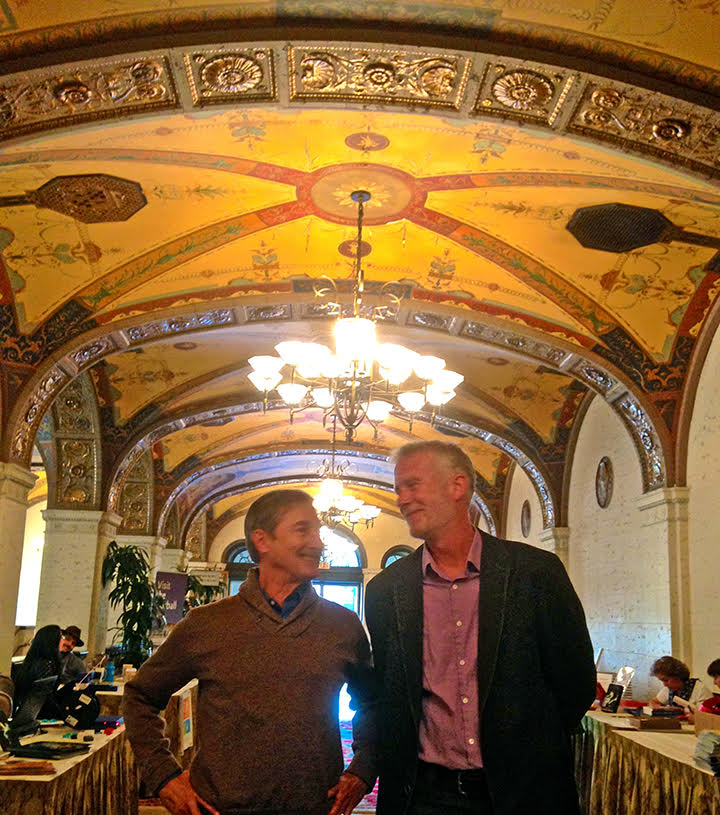
Stuart Grauer (left) and Joe Brooks (right( at the Progressive Educators Network Conference in Los Angeles, California
I think one piece that stands out is that we’ve been able to help Small Schools Coalition and its visionary founder, Dr. Stuart Grauer, spread the message to a much wider audience who really needs to understand the many nuances and realities of large and small schools. So, since we are not solely focused on small schools with CWI, we acknowledge them as an ideal to support always, we can I think serve as a valuable bridge for innovative practices and ideals that are important for schools of all sizes.
Likewise, we have published important writings on small schools by Stuart for many years now with great response from our readers. Those articles are available in Community Works Journal and come up regularly in Google searches, which we know from the many referrals and inquiries we receive seeking support for small schools. I also remain very interested in supporting schools that model best, what we are calling NEXT practices and programs, especially those focused on “using the community as the classroom.”
Our partnership with SSC is very important in helping us reach more of those small schools who are often much more nimble and able to innovate. I also remain deeply committed to the public education model with all it has to give us around deepening real democracy. So in that sense, as we do at our Institutes, I am seeking to create real and substantive dialogue and the sharing of innovative practices across the spectrum of private, independent and public schools. Our partnership with SSC supports that goal!
What does 2020 have in store for the Community Works Institute?
We’re very much looking forward to a number of aspects that represent real growth and evolution for Community Works Institute. We’ve launched a new Institute in Lima, Peru which will happen in January 2020. We’re also in conversations now with colleagues in New Zealand and Australia about doing a CWI South Pacific Institute down under. These will compliment our long running Summer EAST and Summer WEST Institutes, in Brooklyn and Los Angeles respectively, opening up opportunities for educators who cannot make it to North America. We’re also very excited by two other new events under one banner, The NEXT Institute: An Experiential Approach to Diversity, Equity, and Inclusion will take place in Brooklyn and then back in Los Angeles.
We feel The NEXT Institutes are ground breaking and just a beginning really, as an intensive day of inspired learning, collaboration and networking, focused on Diversity, Equity, and Inclusion (DEI) and the core principles that drive the core of our work with educators. We have long focused on social justice in our work but these new one day Institutes represent a very intentional strategy for moving beyond the typical classroom or school approach to aim at DEI related goals. As is already the case with our core week long Institutes, we are focused on getting students outside the walls of the school through experiential projects that connect them with the broader humanity of their local community. We then make broader connections to Sustainability and Global Citizenship, which we believe must begin with work at “home”.
The NEXT Institutes combine theory with practical application around issues of racial, economic, and gender justice. We’re raising important questions with our participants which we intend to drive the conversation in new and important directions. How do we bring culturally relevant pedagogy and curricula to the classroom or program in a way that resonates with learners from all backgrounds, including non neuro-typical learners. How as educators can we be agents of change that challenge the status quo/systemic oppression not only in our classrooms and programs but also at our institutions? How can we combine ethnography, social justice, and social emotional learning in our lessons, units, projects, and better yet, into the culture of our schools and organizations?
We’ve deepened our efforts at offering opportunities ongoing connection, expanding what we call our CWI Collaborative I feel continually humbled by the level of enthusiasm expressed for the work we are about by the folks who attend our Institutes, and some who have not actually. This work feels more important than ever as we look around us at what I think of a seriously torn social fabric out there. I continue to believe that our students represent our best way to bring communities together.
This is fantastic information to have, thanks! Before we let you go, will you please be so kind as to share your “pie in the sky” vision for mainstream K-12 education with us?
I believe it is crucial for the best learning experiences to be a real partnership of students and teachers and that the passion for exploration, learning and experiential means of doing are shared by both teacher and student through what amounts to a learning partnership. And of course, I think that learning must always be interdisciplinary and grounded in the real world of community.
So that scenario explicitly expects that we must have schools that are closely connected to the local community in every respect, with many doors, “porous” walls or no walls. I also see a need for many so called non formal educators to be involved in this process, and what I think of as academic gatekeeping being reduced to a minimum. I have all the respect in the world for teachers in general, but I also realize that teaching literally in the community through experiential projects is not something many or most were trained in. In a word great teachers need great partners in the community to make this vision actually work.
Thank you so much for taking the time to speak with us today Joe! We are very excited to grow our partnership while bringing the benefits of small schools to communities everywhere!
You’re very welcome. Thank you too!
2020 Place-Based Service Learning Institute Discount
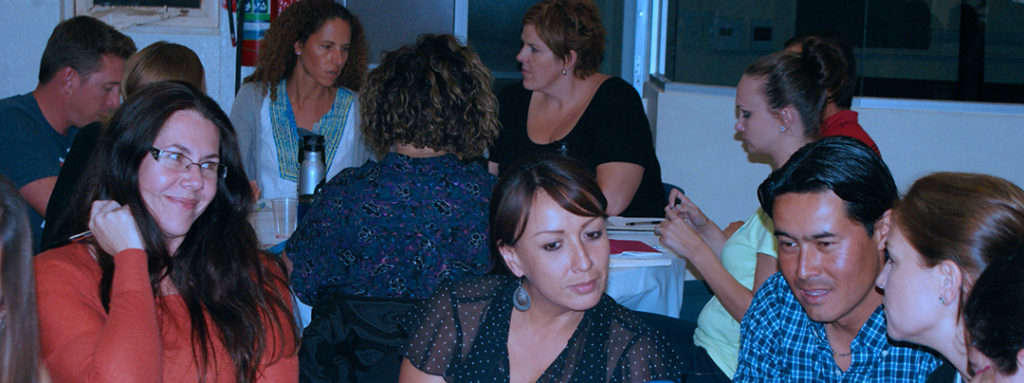
Thanks to our partnership, Small Schools Coalition members get great discounts on all 2020 CWI place-based service learning institutes. If you are not currently a Small Schools Coalition member, we welcome you to become one free-of-charge. Membership in the SSC has some great benefits above and beyond this service learning institute discount! We welcome you to contact us if you have any questions about our partnership with Community Works Institute, membership in the Small Schools Coalition… or if you would like to learn more about the benefits of small schools!

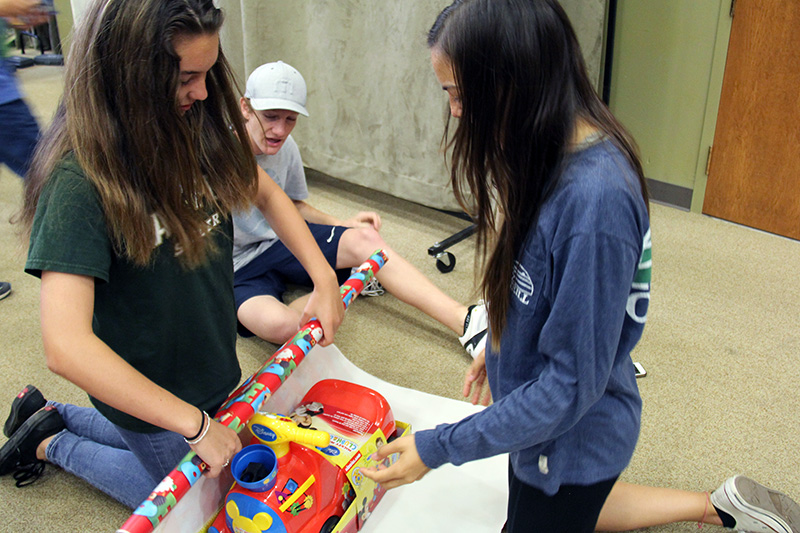
Recent Comments